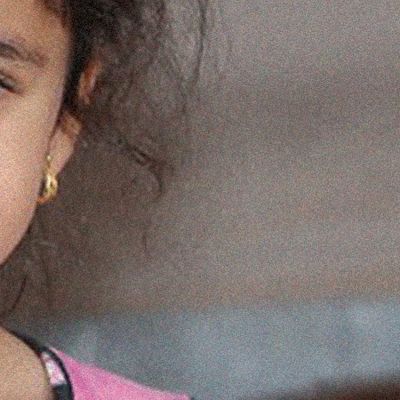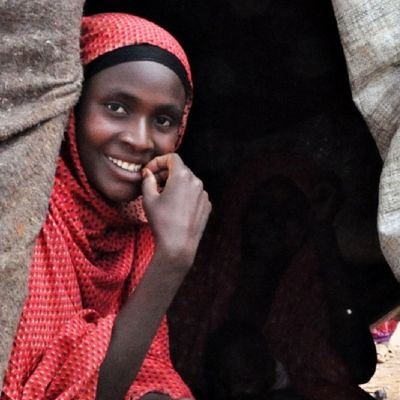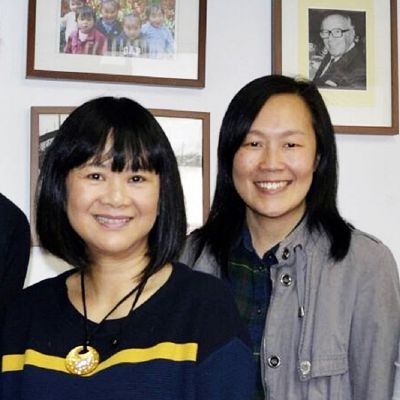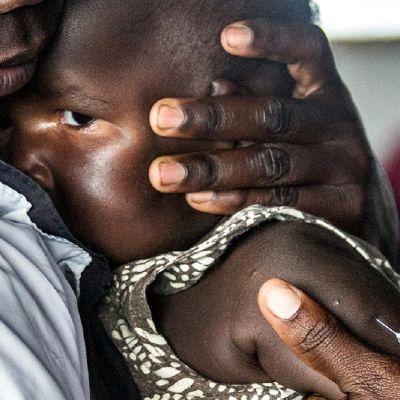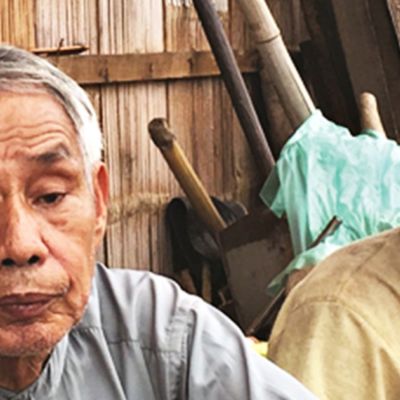Written: Lincoln Chong, Jojo Poon
In September 2015, the image of the body of the Syrian boy, Alan Kurdi, washed up on the shores of Mediterranean Sea, drew the attention of the globe to the European refugee crisis and the wars in Middle East. Just a month ago in April, the equally disheartening image of a Syrian father holding the bodies of his little twins died from chemical attacks has once again stirred people’s sentiments.
“Now the dwelling of God is with men,” (Revelation 21:3) This promise was not only applicable to the early Christians under Roman suppression, but also to the victims today who seem to have suffered an unending stretch of tortures and hidings because of the wars; God is there, suffering with them, listening to them, and comforting them.
When they are being trafficked
The self-immolation of a Tunisian street vender over six years ago started the Arab Spring that consisted of multiple civil wars in North Africa and Middle East, rise of terrorism, and the waves of refugees who risked their lives in fleeing to Europe from the regions in conflict, hoping to settle based on the Schengen acquis.
Between 2015 and 2016, over 1.36 million refugees have crossed the Mediterranean Sea to reach the shores of Greece.[1] A lot of illegal human smuggling groups have earned a fortune from the large-scale migration,[2] where human traffickers took advantage of the situation and abducted those who were vulnerable, especially the children, and turned them into sex slaves and laborers.[3]
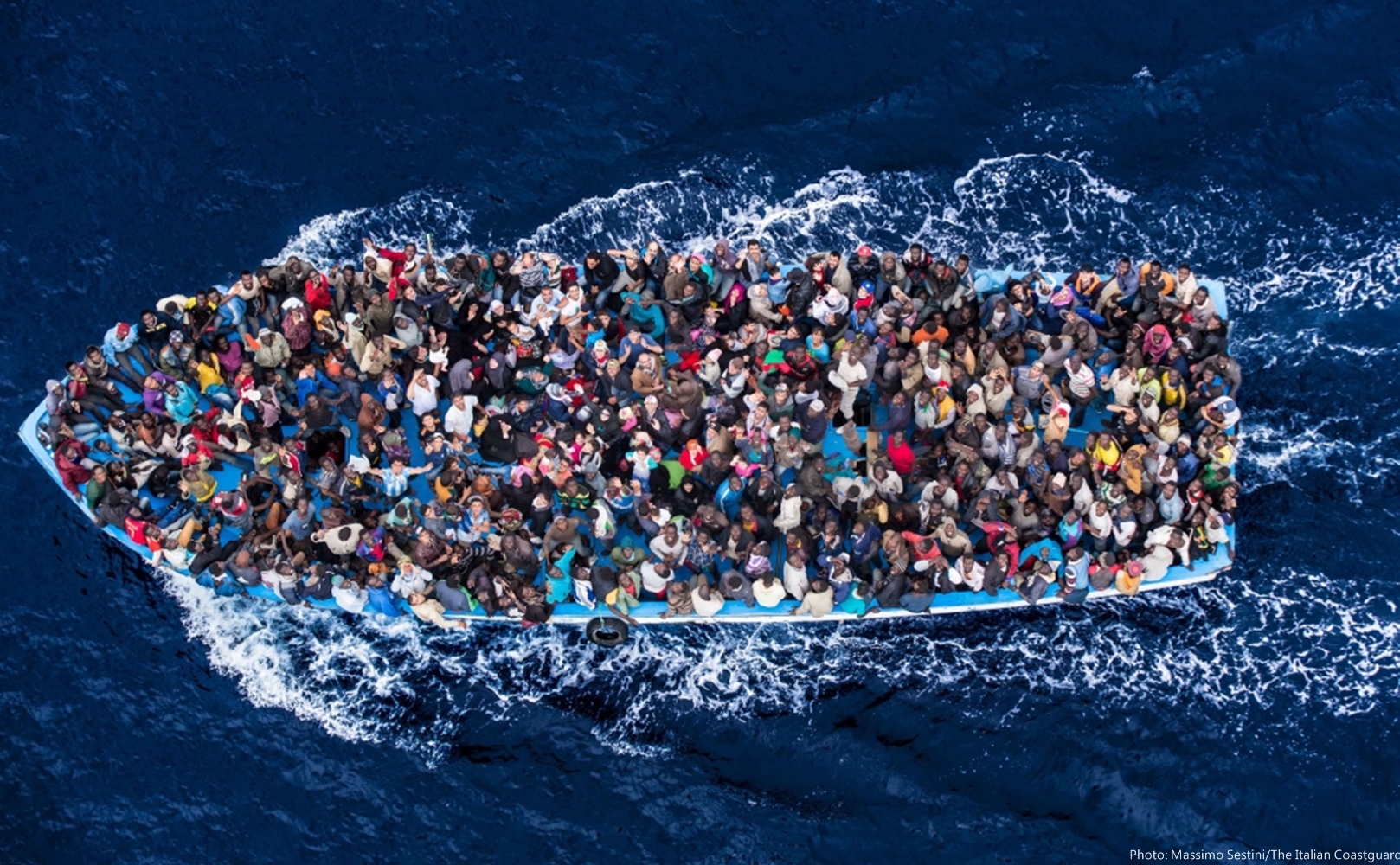
About one in every 4 minors among the refugees in Europe in 2015 was unaccompanied, and Europe police agencies estimated that 10,000 individuals within the unaccompanied children population end up missing.[4]
In the face of such crisis, the European Evangelical Alliance and multiple churches and organizations actively responded by being the bridge between the children and Jesus. In England, churches and refugee supporting networks trained the youth workers to serve the children refugees, especially the unaccompanied ones.[5] Christian organizations have also been providing appropriate help to the unsupervised children on the streets of Greece, as it is the gate to Europe.[6]
When they are discriminated against
The asylum seekers accepted by EU might be the lucky bunch in someone’s mind, but they were far from reaching the utopia. The scars of war and voyaging last much longer than one could imagine.
The Umar family, coming from Damascus, are some of the luckier Syrian refugees, who were accepted into Germany and allowed to start a new life there. The daughter could continue her education in universities and the son found a job in a local electric company. However, living on the line between life and death during the 7 days in the Mediterranean was traumatic to the family, and they are worried every day for the aged grandparents still in Syria.[7]
Zinash, a north African, who now lives in Belgium told us that she had lost all her dignity and confidence as a person after going through the torture on her spirit and body on the way to Belgium, and that her only way to find peace and hope was by seeking Jesus.[8]
Besides the physical and mental toil, the immigrants are also under the threats of terrorism and right-wing cultural discrimination.[9] Muslim women were forbidden to wear their hijabs in some of the French port cities; and there were multiple reports of acts of violence against asylum seekers, Muslims, and immigrants in European countries including Germany and England.[10] Despite those in Germany who would think that the massive inflow of immigrants could relieve the local shortage of labor force, the Arab migrants are currently at a job-seeking disadvantage due to cultural differences and distrust.[11]
In the light of these challenges, French and German churches have hosted cultural awareness events that helped the refugees to better assimilate to the local cultures and communities. Furthermore, senior frontline workers have provided vocational training and business networking opportunities between the refugees and Christian merchants that created social enterprises and jobs[12]
The percentage of displaced population accepted regionally, in descending order (UNHCR, June 2016):
- Middle East and North Africa 39%
- Africa 29%
- Asia Pacific 14%
- America 12%
- Europe 6%
Over 50% of cross-border refugees in the world come from the following countries, in descending order:
- Syria 4.9 million
- Afghanistan 2.7 million
- Somali 1.1 million
When they have nowhere to go
The greatest refugee crisis never took place in Europe, but in the Middle East and North African regions that took in almost 40% of total cross-border refugees globally, and that was excluding the number of internally displaced persons within Syria and Iraq. Most of them are living in temporary camps or abandoned buildings where living conditions are harsh and lack basic survival essentials. Human trafficking was also severe in those areas.[13]
In 2014, the Integral Alliance (IA)[14] have prompted its members, including CEDAR, to provide humanitarian help to the Middle East refugees and share the love of God. In the past year, CEDAR have supported 5,827 such families through other members of IA.
One of the members, the Tearfund UK, has been serving the people in the Lebanon refugee camps. They came to know a Muslim woman, Alba (obscured), in a family visit, who experienced the unimaginable through war, the loss of her son, life threats, and extremely poor living conditions in the camp. When listening to Alba’s story, the visiting staff couldn’t help but wept at her sorrow and hopelessness. As our member’s staff “mourn with those who mourn,” such friendship broke the wall of race and religion, where Alba wiped the tears off the visitor’s face with her hands and requested to pray together. “That was the most beautiful thing I’ve ever experienced,” said the staff.
In the neighboring Iraq, the terrorist ISIS never ceased their invasions and assaults, which forced a lot of Yazidis and Christians to flee to northern Iraq. The Mission East, an IA member, has set up a community center in the Sinjar Mountain in Iraq in 2015 that serves migrant families and adolescents like the 14 years old Yazidis girl, Sarah (obscured). She learned how to sew, make haircuts, and use the computer in the center, which gave her a glimpse of hope in a dark situation. “I like being here. I could open my own hair salon and feed the family when our home is safe again,” said Sarah.
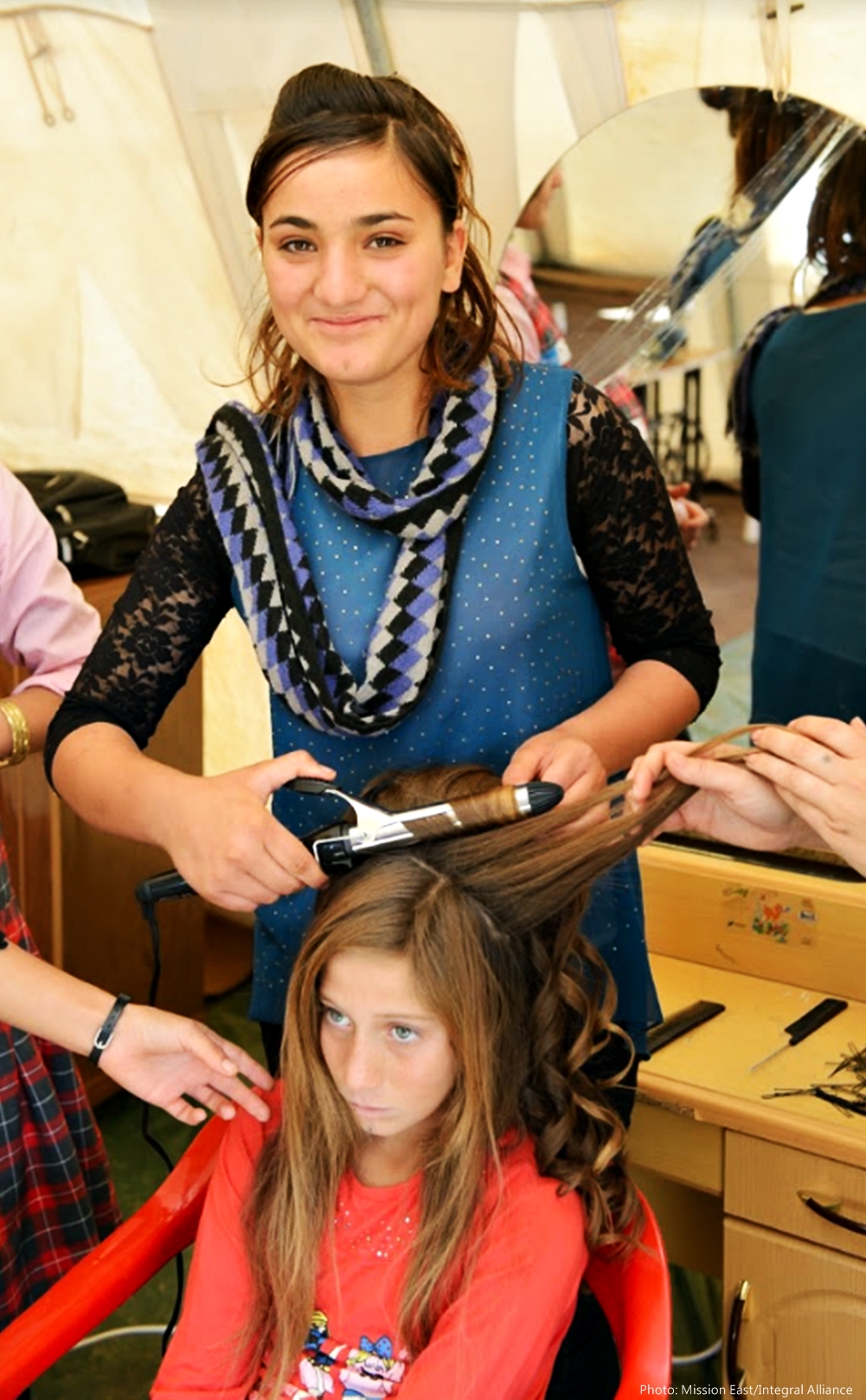
Be the Lampstand for the Homeless
In the vision of the re-created world, John saw Jesus walking between seven golden lampstands. The lampstand was to be lit 24/7 in the OT time which would light the way to the seat of God. As Jesus set up a New covenant with us, the church became the lampstand that guides people to the tabernacle of the new heaven and earth. Let us join hands with global churches and Christian workers to keep praying for and supporting the refugees, and be the lampstand that guides them to taste the promise and grace brought by God’s dwelling.
Glossaries
- Refugee
The people who fled from armed conflicts or oppression, who often face danger and inhumane conditions, whose lives would be threatened if staying in their homes, hence forced to seek refuge in other countries.
Refugees are defined and protected by international law as well as laws of the country of asylum. The protection of refugees has many aspects. These include safety from being returned to the dangers they have fled; access to asylum procedures that are fair and efficient; and measures to ensure that their basic human rights are respected to allow them to live in dignity and safety while helping them to find a longer-term solution. [15]
- Migrant
Migrants choose to move not because of a direct threat of persecution or death, but mainly to improve their lives by finding work, or in some cases for education, family reunion, or other reasons.[16]
- Asylum seeker
An asylum-seeker is someone whose request for sanctuary from political, religious, racial, etc. persecutions, that has yet to be processed.[17]
- Internally displaced person, IDP
The residents who fled from their homes to other regions within the country due to armed conflicts, disasters, poverty, or persecutions. They are not classified as refugees under the law.
- Convention Relating to the Status of Refugees
Passed on 28 July 1951 and effective on 22 April 1954, the convention defined refugee, their entitlements and rights, and the asylum country’s responsibilities. All the signing countries shall not forcefully return any refugees to a country where they face serious threats to their life or freedom.[18] There are currently 146 countries that have signed this convention.
- United Nations Convention against Torture
Short form of The United Nations Convention against Torture and Other Cruel, Inhuman or Degrading Treatment or Punishment, an international human rights convention aims to stop the use of torture and other similar treatments. The convention also requires the signing countries to effectively avoid and cease any form of tortures anywhere under their jurisdiction, and prohibits them to return refugees to their origin countries where they could be tortured.
Hong Kong is one of the signing members of the convention, and the Immigration Department will accept and process torture claimants. Those passing the review could go on to be permanent residents in Europe countries and the US. However, the process normally takes 8 to 10 years, where the applicants could only temporarily live in Hong Kong and not be able to work, and to live off of a 3,000 HKD subsidy per person given by the government. Since Hong Kong did not sign the Convention Relating to the Status of Refugees, the torture claimants could not obtain residency in Hong Kong.[19]
- Schengen Agreement
A treaty signed between European countries which regulate abolishment of border controls between each country, where any valid passport holders of one signing country could freely move between all other member countries.
註:
[1] https://data2.unhcr.org/en/situations/mediterranean
[2] The money involved in human smuggling towards Europe reached 4 billion Euros in 2015 alone.
http://frontex.europa.eu/feature-stories/profiting-from-misery-how-smugglers-bring-people-to-europe-tQtYUH
[3] https://www.theguardian.com/world/2016/may/19/human-traffickers-using-migration-crisis-to-force-more-people-into-slavery
[4] https://blog.oup.com/2016/06/europe-refugee-crisis-minors/
[5] http://www.forrefugees.uk/youth-workers-inspired-to-serve-young-refugees-in-national-training-day/
[6] https://www.faros.org.gr/
[7] https://www.theguardian.com/world/ng-interactive/2017/mar/01/who-are-europes-newcomers
[8] http://evangelicalfocus.com/lifetech/1375/Show_your_love_for_refugees_but_respect_their_privacy
[9] Right-wing parties were on a rise in France, Germany, Italy, Netherlands, etc. in recent years, who are generally anti-immigrants and pro-refugee restrictions, and have become a threat to the current humanitarian situation in Europe. The leader of the Party for Freedom, the second-largest party of Netherlands, described the current refugee situation as a “Muslim invasion that threatens [their] prosperity, safety, culture, and identity.”
[10] https://www.amnesty.org/en/countries/europe-and-central-asia/report-europe-and-central-asia/
[11] https://www.theguardian.com/commentisfree/2015/sep/06/germany-refugee-crisis-syrian
[12] http://evangelicalfocus.com/lifetech/2337/Restarter_empowering_refugees_to_make_a_new_start
[13] http://www.humanrightsfirst.org/blog/syrian-refugee-crisis-greenhouse-human-trafficking-0
[14] The Integral Alliance (IA) connects 23 Christian relief and developmental organizations, including CEDAR, in the hope of improving their joint efficiencies in response to global poverty.
[15] http://www.unhcr.org/hk/5795-unhcr-viewpoint-refugee-or-migrant-which-is-right-2-2.html
[16] http://www.unhcr.org/hk/5795-unhcr-viewpoint-refugee-or-migrant-which-is-right-2-2.html
[17] http://www.unhcr.org/asylum-seekers.html
[18] http://www.un.org/chinese/hr/issue/docs/82.PDF
[19] Christian Action – Serving Refugees.
Content of this issue
Written: Lincoln Chong, Jojo Poon In September 2015, the image of the body of the Syrian boy, Alan Kurdi, washed up on the shores of Mediterranean Sea, drew the attention of the globe to the European refugee crisis and the wars in Middle East. Just a month ago in April, the equally disheartening image of a Syrian father holding the bodies of his little twins died from chemical attacks has once again stirred people’s sentiments. “Now the dwelling of God is with men,” (Revelation 21:3) This promise was not only applicable to the early Christians under Roman suppression, but also to the victims today who seem to have suffered an unending stretch of tortures and hidings because of…
Author: Dr. Mok Chiu Yau (CEDAR China Programme Advisor) In the OT, Ruth was the very definition of an underprivileged sojourner as she had to leave her home in Moab to Israel, an anti-Moabites community, to take care of her mother-in-law. Ruth was probably born around 1,100 B.C. or earlier. Being a Moabite in eastern Palestine, her tribe was shunned upon by the God-chosen Israelites, as centuries ago the Moabite king hired prophet Balaam to curse and expel the Israelites, who at that time was a massive body of refugees themselves, seeking to pass through Moab (Numbers 24:1-6). And then there was the account where Israelites were being seduced by Moabite women into the acts of adultery, and…
Banner image: (Left to right) The author, Executive Director of CA, Mrs. Cheung-Aug Siew Mei, CEDAR Staff, Jojo, and Director of CA’s Centre for Refugees, Justin Gaurav Murgai. Interviewer and Editor: Lincoln Chong Refugees are often viewed as a group of aliens in foreign lands who would only appear on the international news occasionally. The vast majority of Hong Kong people hold the same views, thinking refugees do not concern their well-developed city; yet we forget that our society was built by refugees escaping from civil wars. The waves of Vietnamese refugees in 70s to 80s were also an integral part of Hong Kong’s history. We visited the Christian Action (CA) to find out more about what Hong…
Ever since the declaration of independence of South Sudan, the South African country was never free of ethnic and political conflicts. South Sudan’s President, Vice President, and the House Chair came from the tribe of Dinka, Bari, and Nuer—three of the largest ethnic groups of the country—respectively. The Vice President raised a coup against the President in 2013, and the political conflict quickly turned into a nation-wide civil war, involving over 20 military groups, and causing the deaths of tens of thousands of countrymen. An increasing number of regions were damaged by the violence exerted by both the government and the anti-government forces. The armed conflicts sent more and more Sudanese refugees to the neighboring Uganda, which accepted…
Banner image: A 72-year-old pastor partnering with a younger pastor to visit the refugees The Myanmar government and the anti-government forces were at war for the past 10 years. As the conflict was reinitiated in 2016, the estimated number of internally displaced population has reached 660,000. The conflicts in Kachin State alone forced close to 100,000 to flee to Yunnan, China. The peace-loving Lisu in Kachin State never took up arms, but their crops, livestock, even villagers, became resources targeted by both the Myanmar government forces and the opposing Kachin forces. The great unrest drove the Lisu away from home who became refugees in Thailand, Malaysia, India, etc.; a lot of them fled to other regions of the…



